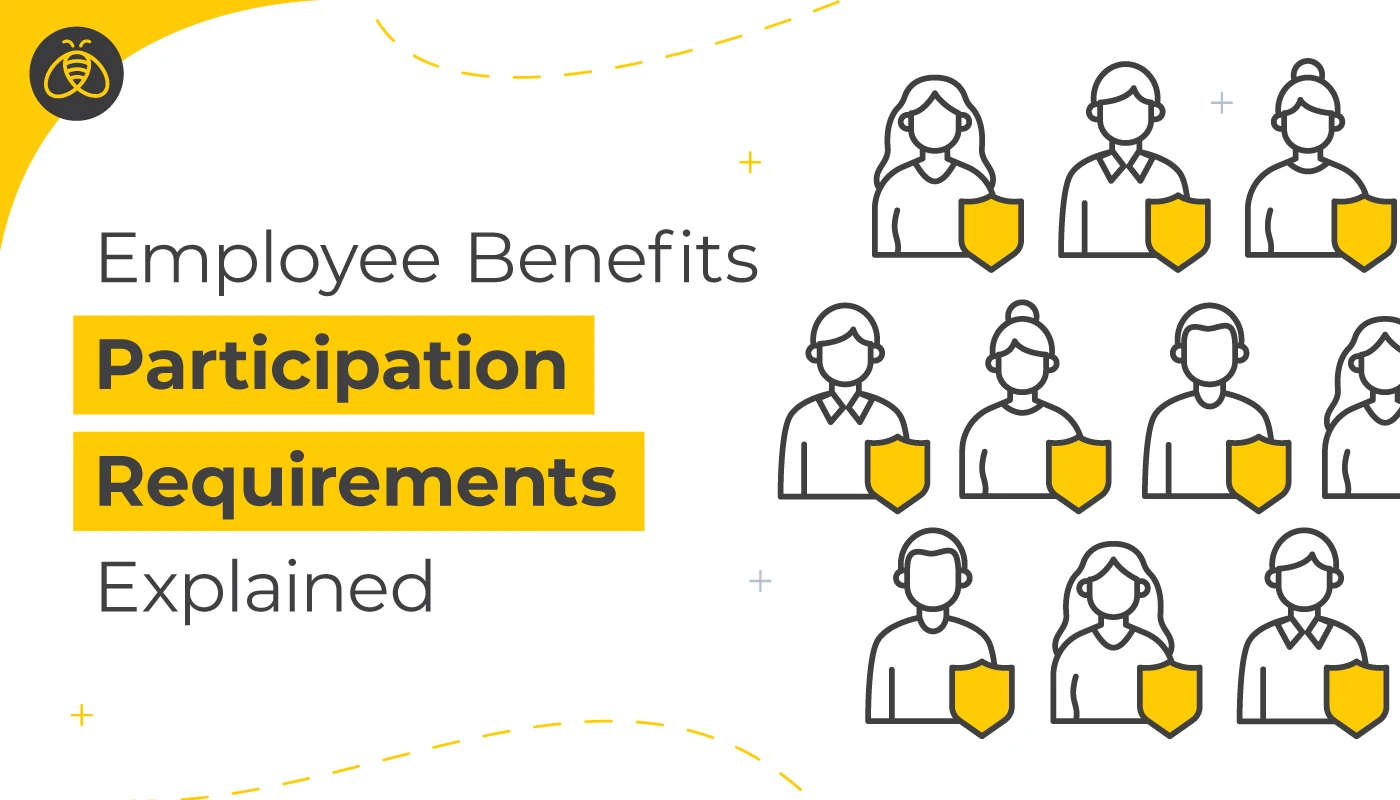Employee Benefits Participation Requirements Explained
By: Benefits by Design | Tuesday March 21, 2023
Updated : Tuesday November 7, 2023
What are employee benefits participation requirements? Ever wondered why you have to join the benefits plan when you start a new job? Well, it’s because the insurance company usually sets conditions that mandate all eligible employees must be enrolled.
What are Employee Benefits Participation Requirements?
When an employer implements an employee benefits plan, they will need to decide upon or confirm the participation requirements. That is – the percentage of eligible employees who are required to be enrolled in the employee benefits plan.
Participation in the benefits plan is often mandatory. Mandatory participation means that 100% of eligible employees are required to be enrolled in the employee benefits plan. This is especially true for small companies. Most insurers require a large number of participants before they will offer an employee benefits plan that allows some of the employees to opt out.
Furthermore, benefits participation in plans where the employer pays the entirety of monthly premium is usually mandatory. Whereas plans that expect employees to pay part of the premium can be set up with non-mandatory benefits participation requirements. (Provided the number of participants is large enough.) Thus, allowing employees to opt-out if they don’t feel the group insurance is needed.
7 Factors that affect group insurance eligibility and coverage
Total Waivers
Should an employee wish to opt out of the employee benefits plan (and the participation requirements allow it), they will be required to acknowledge this request. The Total Waiver form confirms the employee is aware of the benefits coverage that was available to them, and that they are choosing to opt out of that coverage.
Late Applicants and Anti-Selection
Employees must be enrolled in the benefits plan within 30 days of the date they become eligible. If they do not, the employee becomes a late applicant, which has certain implications. These include back-paying premiums, or the possibility that the employee must submit evidence of insurability prior to the coverage taking effect. In the latter case, an employee could be refused coverage altogether depending on their medical history.
Why is this important in reference to employee benefits participation requirements? Often, employers and employees confuse non-mandatory participation with anti-selection. Anti-selection is when an employee does not want employee benefits until they need to make a claim. For example, they suddenly need major dental work, or find out they have Type 2 Diabetes and require medical supplies.
When an employee in this position attempts to enroll in the benefits plan, the late applicant process helps mitigate the risk to the benefits plan that anti-selection creates. And this is another reason why Total Waivers are required.
Benefits participation requirements, along with late applicant rules and processes, means that employees must enroll in the employee benefits plan when they become eligible. If employees were only paying premiums while they needed to make expensive or routine claims, the plan would not be sustainable. (More on sustainability below.)
Waiving Health and Dental Benefits
There is a difference between signing a Total Waiver and waiving your extended health and dental benefits.
If an employee has comparable coverage for their health and dental through another means, such as spousal coverage, they can choose to waive the coverage offered by their employer. They will usually need to provide policy information in order to do so.
The difference is that the coverage is not based on benefits participation requirements set out in the group insurance contract. Rather, it is contingent on alternate coverage.
Just because an employee has spousal or other coverage, does not mean that they have to waive their employer’s health and dental. In fact, coordinating these benefits can by quite helpful when it comes to covering co-insurance and going beyond annual maximums.
Coordination of Benefits: Can I Have More Than One Benefit Plan?
Plan Sustainability and Benefits Participation
Group Insurance works because the potential risk of an event occurring to everyone covered under a plan is extremely small. For example, insurers can cover all employees for Life Insurance at a lower rate because most employees won’t pass away before they retire.
Therefore, when an employer sets up a benefits plan, the insurer needs to make sure that enough employees will be enrolled for the rate to make sense. Implementing benefits participation requirements means that a certain number of plan members are guaranteed to be paying premiums. This in turn means the plan will be sustainable, and the insurance company will be able to cover the claims that are submitted.
Achieve a Sustainable Benefits Plan Using Your Claims Experience Data
Possible Employer Liability
There is another thing to consider regarding employee benefits participation requirements – and that is employer liability. If an eligible employee was supposed to be enrolled and have coverage for specific situations or events, then they better have it.
The risk is this: if the employee is not covered and the event occurs (for example, the employee is injured and becomes disabled), the employer is liable to pay the benefit to the employee that the insurance company would have paid. Which basically negates the whole reason for having the group insurance in the first place. This risk is also possible with late applicants.
10 Common Mistakes to Avoid as a Group Benefits Plan Administrator
In conclusion, it’s important to pay attention to the benefits participation requirements so that all eligible employees are enrolled in a timely manner. We suggest including the enrollment forms as part of your employee onboarding process.


